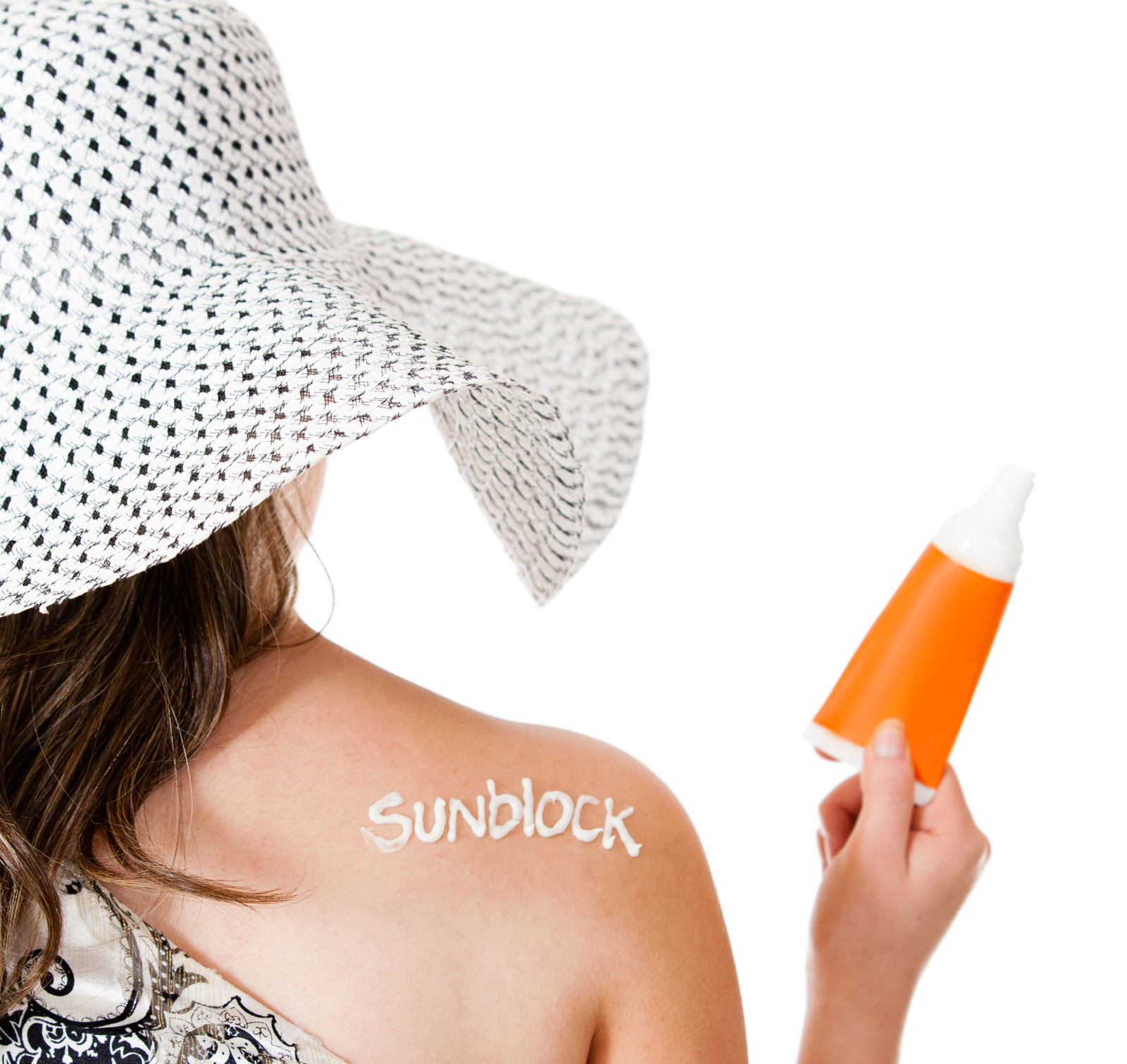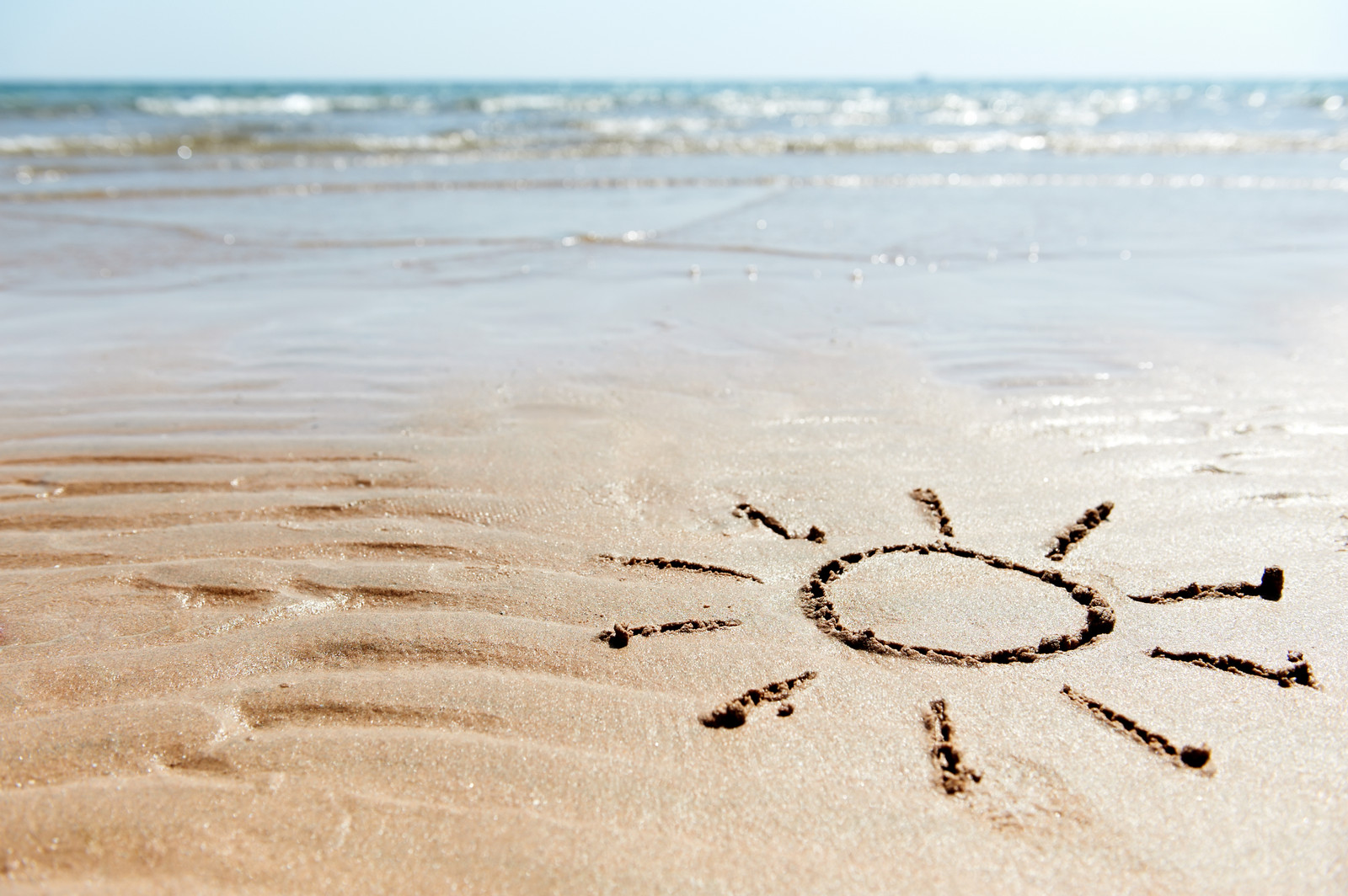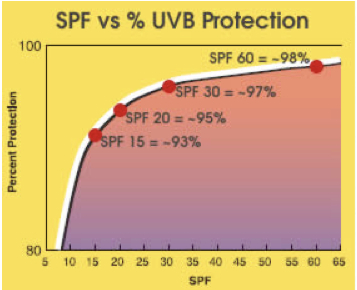SPF 50
Very common questions asked about sunscreen use:
- How high must my SPF be?
- Is SPF 50 high enough?

Not that long ago, this was thought of as being outrageously high for a sunscreen. However, today there are many sunscreens around that are way higher - some even over SPF 100.
There is quite a lot of controversy concerning very high SPF's. Many legislative organizations are now saying no higher than SPF 50 is allowed on a label.
Is SPF 50 sun protection the highest required?
Wanting to protect your skin from sunburn and the potential skin cancers, as well as premature skin aging, it's understandable that the highest SPF possible will appeal.
It's just not that simple.
Do you Apply enough?
Although a higher SPF will offer some safety margin, most people do not apply enough sunscreen. To obtain the SPF value, the laboratory testers apply 2 mg's of sunscreen per square centimeter of skin.
However, most people will only apply about 0.5 to 1 mg per square centimeter of skin. This results in a quarter to half the protection of the labeled value.
Negatives:
- For any SPF over 50 (which blocks an estimated 98 percent of UVB rays), the increase in actual UVB protection is minimal.
- Balancing the UVA protection is near impossible oder an SPF50.
Second, although UVA protection is also important (UVA not only accelerates skin aging, but contributes to and may even initiate skin cancers), SPFs mainly measure UVB protection. Individuals applying high-SPF sunscreens may not burn (UVB is the chief cause of sunburn), but without UVA-screening ingredients they can still receive large amounts of skin-damaging radiation.
 Sun Protection Factor
Sun Protection FactorTo avoid such a scenario, regulatory bodies in Europe and Australia have adopted UVA testing guidelines and measurement standards, and capped the SPF of sunscreens at 50+.
Products with very high SPFs may also encourage individuals to neglect other photoprotective behaviors, like seeking the shade and wearing sun-protective clothing. By preventing sunburn, sunscreens with very high SPFs can create a false sense of security, prompting consumers to stay out in the sun longer. Sun damage (for example, UVA damage) can take place without skin-reddening doses of UV radiation, and even the best sunscreens should be considered just one vital part of a comprehensive sun protection regimen.
The importance of using both UVB and UVA protection cannot be emphasized enough. For patients who really wish to know “how high should I go?” I suggest products with SPFs no lower than 30 and no higher than 50. In addition to an SPF of 30+, your sunscreen should include some combination of the following UVA-blocking ingredients:
- zinc oxide
- titanium dioxide
- avobenzone
- ecamsule
- oxybenzone
Sunscreens with both UVA and UVB protection may be labeled multi spectrum, broad spectrum, or UVA/UVB protection
SPF and UVB protection
 SPF50 on the UV protection curve
SPF50 on the UV protection curveThe figure below illustrates how as the SPF levels curve more sharply after SPF 15, the extra protection offered is marginal. Eg. SPF 30 provides 97% protection from the sun's UVB rays, while an SPF 60 only provides 98% protection. Higher SPF levels block out only a small fraction extra of ultraviolet radiation than the lower levels.
In fact, it is interesting to note that an SPF8 provides 80% protection. However, my experience of using sunscreens with an SPF8, is that when I am outdoors for a few hours at a time, SPF8 does not prevent me burning where an SPF30 will do an excellent job. Although not really a huge difference in percentages, the difference seems huge in actuality.
The SPF numbers can also tend to mislead people into thinking that using an SPF 30 is twice as protective as a SPF 15, or that a SPF 100 is twice as good as one with SPF 50. From the diagram we can see that this is just not true.
SPF Protection Curve
SPF labels the UVB protection only, but it is important to note that additional good protection from UVA rays is of utmost importance. The FDA in the US is proposing the implementation of a four-star system for rating the UVA protection of a sunscreen. As UVA rays are responsible for deeper skin damage and contribute to the development of skin cancer, it is important to make sure you choose a sunscreen with both UVA and UVB protection.
The higher the SPF the more important it is to balance your protection with high UVA protection. As it is quite difficult to obtain a high UVA level without the use of chemical sunscreens that are toxic, it is sometimes more sensible to choose a lower SPF. Otherwise you end up staying out in the sun longer than you normally would, as the SPF prevents you burning. Ie. Without your brain being told to get out of the sun as your skin is burning, the UVA rays are effectively being allowed to do more damage.
More important than a high SPF 50, is perhaps the correct application of your sunscreen, as well as reapplying when required. So make sure to apply your sunscreen liberally and evenly to all exposed skin. Reapplication is a good thing on average every couple of hours or after wiping off sweat, or swimming.
If you feel you're prone to burning easily, as I am, then you may wish to try getting a sunscreen with SPF 50 or even protective clothing that is labeled with a high SPF rating.




New! Comments
Have your say... please leave me a comment in the box below.